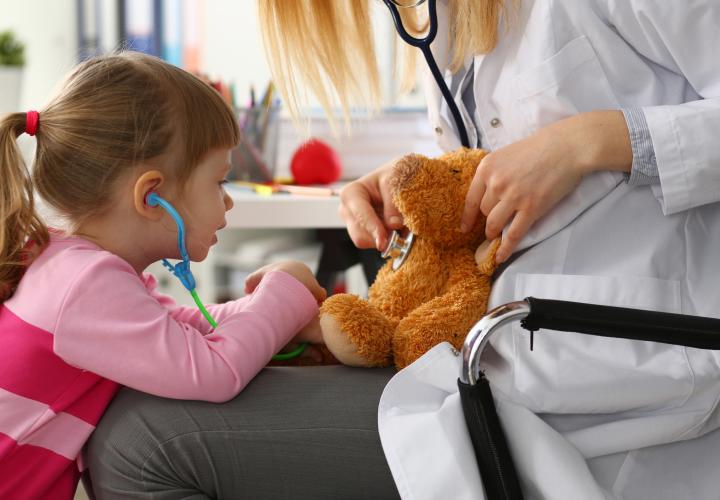If your child has been scheduled for their first heart ultrasound—called an echocardiogram—you probably have questions. That’s completely normal! An echocardiogram is a safe, gentle test that shows pictures of your child’s heart using sound waves. There are no needles, and it doesn’t hurt.
As the only health system in CT 100% dedicated to kids, we’re here to make this experience easy, comforting, and even a little fun. Brooke Davey, MD, director of the echocardiography lab at Connecticut Children’s, walks parents through the process.
Schedule an Appointment
Connecticut Children’s Heart Center provides expert care for irregular heart rhythms. We’ll help you understand your child’s condition and guide you through diagnosis, treatment and follow-up.
1. To-Do’s Before the Appointment
To help your visit go smoothly, we ask that you:
- Check your child’s MyChart account before the appointment and complete any forms that may be needed.
- Dress your child in something comfortable and easy to take off, since they’ll wear a hospital gown during the test.
- Pack snacks, drinks, books or toys. The echocardiogram can take an hour or more.
>>Related: Expert-approved comfort items to bring to a doctor’s visit
2. When You Get to Connecticut Children’s
When you get here, check in at the front desk. Then, our friendly staff will direct you from there and help you get settled in the waiting area. We know how to help kids feel safe and welcome—from toddlers to teens—and we always work to make every family feel at ease.
About Your Child's Heart Care Team at Connecticut Children's
Our pediatric cardiology team is made up of highly trained experts who work with children every day. Whether it’s the echocardiographer taking pictures of your child’s heart, or the cardiologist reviewing the results, your child is in the best of hands.
We also work closely with our other 30+ pediatric specialties—from primary care doctors to surgeons to genetic counselors—so your child’s care is connected and complete.
3. What Happens During the Echocardiogram
When it’s your child’s turn, a staff member will bring you to a quiet room with soft lighting. Choose a movie or show to watch on the screen while the echocardiographer begins the test.
- First, small stickers with wires may be placed on your child’s chest. These help track their heartbeat during the test, which we’ll explain in ways they can understand.
- Then, a special device (called a probe) with a bit of ultrasound gel is gently moved over your child’s chest and belly. The gel might feel cold, but the test doesn’t hurt. The probe uses sound waves to take pictures of the heart from different angles.
- The hardest part? Staying still! If your child wiggles too much, it can make it harder to get clear pictures. But don’t worry—we’re patient, and we’ll take breaks as needed to keep things calm.
Sometimes, the cardiologist may stop by to look at the images right away. If more pictures are needed, we’ll let you know before the test ends.
>>Related: Need a fetal echocardiogram? Here’s what you can expect.
4. After the Test
When the echocardiogram is finished, we turn the lights back on, remove the stickers, and wipe off the gel. If you’re only here for the echo, you’ll head back to the checkout desk. But if your child also has a cardiology appointment, you’ll go to an exam room where:
- A nurse or medical assistant checks your child’s vital signs (like weight and blood pressure).
- An ECG (another heart rhythm test) is done.
- The cardiologist meets with you to talk about the test results and next steps.
All heart ultrasounds are reviewed by a pediatric cardiologist. Their full report is added to your child’s medical record and will be available to you in MyChart. Our team is always here to answer your questions, explain results, and guide your family through any treatment or follow-up needed.
At Connecticut Children’s, your child’s heart health and well-being are our number one priority.
